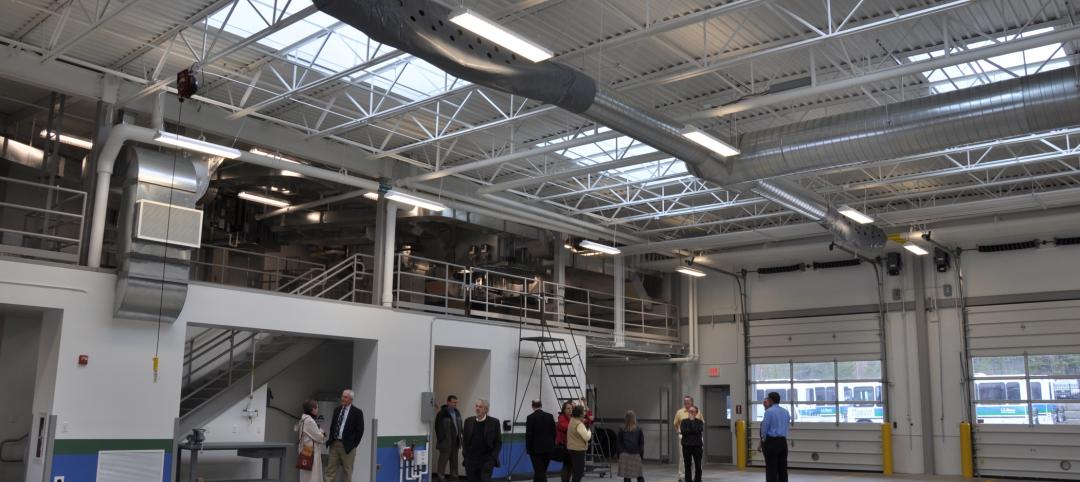The commercial real estate development industry grew at the strongest pace since the economic recovery began in 2011, according to an annual report on the state of the industry released today by the NAIOP Research Foundation.
The report, entitled “The Economic Impacts of Commercial Real Estate,” determined that the economic impact realized by the development process rose a significant 24.06% over the previous year, the largest gain since the market began to recover in 2011.
Direct expenditures for 2013 totaled $124 billion, up from $100 billion the year before, and resulted in the following economic contributions to the U.S. economy:
- Total contribution to U.S. GDP reached $376.35 billion, up from $303.36 billion in 2012;
- Personal earnings (or wages and salaries paid) totaled $120.02 billion, up from $96.75 billion in 2012; and
- Jobs supported (a measure of both new and existing jobs) reached 2.81 million in 2013, up from 2.27 million the year before.
The report says that the outlook for the remainder of 2014 and into 2015 is that the figures will continue to rise, with year-over-year growth expected in the range of 8-15%.
Commercial real estate development has an immense ripple effect in the economy, providing wages and jobs that quickly roll over into increased consumer spending.
“Commercial development’s economic impact is tremendous; simply put, a healthy development industry is critical to a prosperous U.S. economy,” said Thomas J. Bisacquino, NAIOP president and CEO. “As the uneven pace of the nation's economic recovery continues, the industry seeks public policy certainty that bolsters investors’ and developers’ confidence. Despite this lack of assurance, we see positive indicators of a rebounding industry, but believe the industry could be more robust.”
Industrial, Warehousing, Office and Retail Show Strong Gains:
- Industrial development posted a year-over-year gain of 48.5 percent due mainly to groundbreaking of energy-processing facilities.
- Warehouse construction registered a third strong year of increased expenditures in 2013, gaining 38.1 percent in 2013. This is on top of 2012 growth of 28.4 percent and 2011 growth of 17.8 percent, showing a sustained increase in demand for warehousing space.
- Office construction expenditures rose for a second year in 2013, up 23.3 percent from 2012.
- Retail construction expenditures rose modestly for a third year in 2013, up 4.8 percent from 2012.
Operations and Maintenance Surge Even As Building Owners Cut Costs With Energy Efficiencies and New Technologies
Through increased energy efficiency and advanced technology, building owners cut the average per-square-foot cost of operating building space in the U.S. by 14 cents, from $3.20/square foot to $3.06/square foot. Still, maintaining and operating the existing 43.9 billion square feet of commercial real estate space resulted in $134.3 billion of direct expenditures, and resulted in the following economic contributions to the U.S economy:
- Total contribution to GDP in 2013 $370.9 billion;
- Personal earnings (wages and salaries) totaled $116.8 billion; and
- Jobs supported, 2.9 million.
Top 10 States by Construction Value for Office, Industrial, Warehouse and Retail:
1. Texas
2. Louisiana
3. New York
4. California
5. Iowa
6. Florida
7. Maryland
8. Georgia
9. West Virginia
10. Oregon
Four new states joined the list: Louisiana, Maryland, West Virginia, and Georgia. These states made the top ten list due predominantly to development of highly specialized and expensive energy-related processing facilities. Illinois, Ohio, Massachusetts, and North Carolina dropped off the top 10 list, slipping to Nos. 11, 14, 15 and 18 respectively.
The report includes detailed data on commercial real estate development activity in all 50 states, and also ranks the top 10 states specifically according to office, industrial, warehouse and retail categories.
The report is authored by Dr. Stephen S. Fuller, director of the Center for Regional Analysis at George Mason University, and funded by the NAIOP Research Foundation.
An executive summary and the full report is online: www.naiop.org/
Related Stories
| May 29, 2012
Thornton Tomasetti/Fore Solutions provides consulting for Phase I of Acadia Gateway Center
Project receives LEED Gold certification.
| May 24, 2012
2012 Reconstruction Awards Entry Form
Download a PDF of the Entry Form at the bottom of this page.
| May 24, 2012
Gilbane’s Spring 2012 economic report identifies multiple positive economic and market factors
Anticipating increasing escalation in owner costs through 2014.
| May 24, 2012
Construction backlog declines 5.4% in the first quarter of 2012?
The nation’s nonresidential construction activity will remain soft during the summer months, with flat to declining nonresidential construction spending.
| May 24, 2012
Stellar completes St. Mark’s Episcopal Church and Day School renovation and expansion
The project united the school campus and church campus including a 1,200-sf chapel expansion, a new 10,000-sf commons building, 7,400-sf of new covered walkways, and a drop-off pavilion.
| May 23, 2012
MBI Modular Construction Campus Launched on BDCUniversity.com
White Papers, Case Studies, Industry Annual Reports, published articles and more are offered.
| May 23, 2012
Gifford joins Perkins Eastman as principal
Design and planning expertise in science, technology, education, and healthcare.
| May 23, 2012
McRitchie joins McCarthy Building as VP, commercial services in southern California
McRitchie brings more than 18 years of experience in the California construction marketplace.
| May 23, 2012
Arizona Army National Guard Readiness Center awarded LEED Silver
LEED certification of the AZ ARNG Readiness Center was based on a number of green design and construction features SAIC implemented that positively impacted the project and the broader community.
















